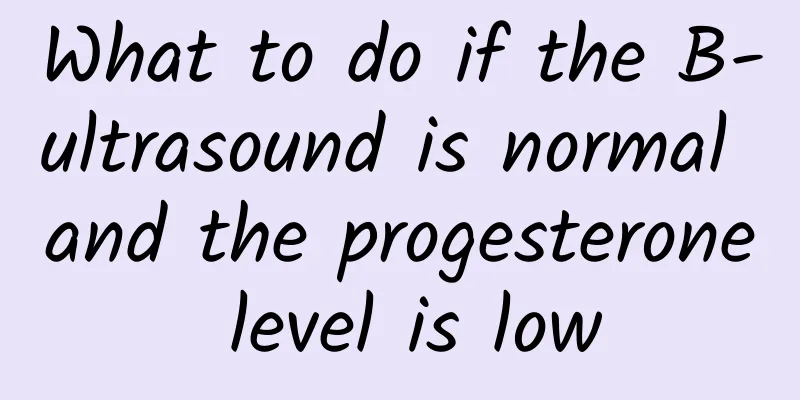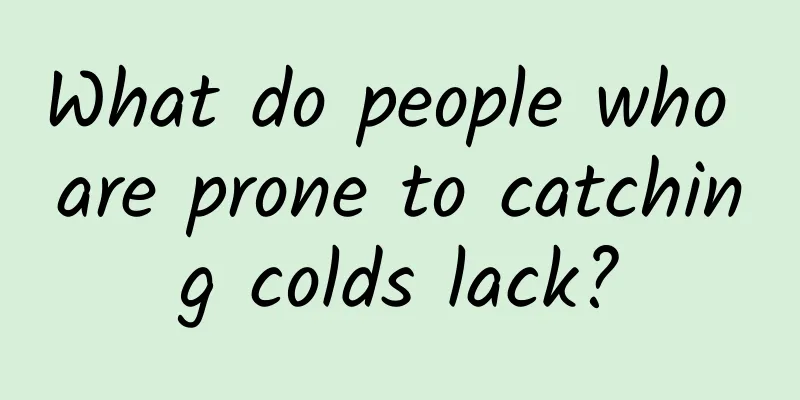How to treat eczema

|
How to treat eczema is a problem that troubles many patients with eczema, because the eczema suffered by many patients is not easy to cure even after a long time of treatment, and it is very stubborn. Moreover, eczema is not only unsightly but also very uncomfortable, and it is also very itchy, so many eczema patients will be very irritable. The cause of eczema is actually very complicated, and it is often the result of the interaction between internal and external factors. Therefore, it is best to treat eczema both internally and externally to achieve obvious results. Eczema is also divided into many types, including acute eczema, chronic eczema, localized and generalized eczema, etc., and attacks may occur in any part of the body, such as hands, legs, ears, breasts, vulva, etc., so the diversity of eczema can be seen. Some eczema can be cured with a little treatment, but many are more stubborn, so patients need to seek medical attention in time. The doctor should diagnose the type of eczema and the cause of the eczema, and symptomatic medication can relieve the symptoms. Eczema is an inflammatory skin reaction with polymorphic lesions and a tendency to exudate caused by a variety of complex internal and external factors. The cause of this disease is complex and difficult to determine. Subjective symptoms: severe itching. The disease is prone to recurrence and may linger for many years without being cured. General treatment 1. Try to find out the cause of the patient's illness or aggravation as much as possible, and understand the patient's medical history, work environment, living habits, thoughts and emotions in detail; perform allergen tests, such as skin prick tests or intradermal tests, specific IgE antibodies and patch screening tests, to find possible allergens. 2 Avoid adverse external stimuli as much as possible, such as washing with hot water, scratching violently, etc.; try not to wear synthetic underwear and fur products; avoid eating allergenic and irritating foods, such as seafood, peppers, alcohol, coffee, etc. 3. Keep your skin clean, prevent skin infections, avoid overwork, and maintain an optimistic and stable mood. Topical treatments 1. For acute eczema without exudation, apply calamine lotion externally 4-6 times a day. If itching is obvious, add glucocorticoid cream for external use. Such as 1% hydrocortisone cream or 0.0.1% hydrocortisone butyrate ointment, 0.1% triamcinolone acetonide cream or 0.1 mometasone furoate cream (trade name Eloson), etc., for external use 1-2 times a day. When there is exudation, first use 2%-3% boric acid solution or saline for cold wet compress, 30-60 minutes each time, 2-4 times a day or continuous wet compress. Apply 40% zinc oxide oil externally during the intervals or at night. After the exudation decreases, use zinc oxide paste instead. 2 For subacute eczema, you can use pastes, such as zinc oxide paste or 5% bran oil paste, or glucocorticoid cream, for external use 2-3 times a day. 3 For chronic eczema, you can choose glucocorticoid creams, ointments or plasters, zinc oxide ointments, and tar ointments. 1. For glucocorticoids, use 1% hydrocortisone cream or 0.1% hydrocortisone butyrate ointment, 0.05% beclomethasone ointment, 0.1% triamcinolone acetonide cream, 0.1% mometasone furoate cream, 0.05% halometasone cream (trade name Aoneng Skin Ointment) or compound halometasone cream (trade name Xinshiquede), 0.02 clobetasol propionate cream (trade name Enfu Cream), etc. Choose 1-2 of them for external use 2-3 times a day; 15% zinc oxide ointment for external use 2-3 times a day; tars, such as 5%-10% black bean distillate oil ointment, 10% ichthyol ointment, 10% bran distillate oil ointment, etc. Choose 1 of them for external use 2-3 times a day. Non-glucocorticoid anti-allergic topical preparations can also be used, such as 5% ethosulfate ointment (trade name Aidit), 5%-10% sodium cromoglycate cream or ointment, applied topically 2-3 times a day, and a course of treatment is 2-4 weeks. 2. For stubborn hypertrophic skin lesions, you can use triamcinolone urea ointment or 0.1% triamcinolone dimethyl sulfoxide solution; you can also wrap the above ointment with plastic film or cellophane and apply it once a night; you can also apply a hard plaster containing glucocorticoids to small hypertrophic skin lesions. 4. Secondary infection of eczema, such as secondary bacterial infection, in addition to using wet compresses with anti-infection effects such as 0.05% berberine solution for wet compresses, you can use a mixed preparation of glucocorticoids and antibiotics, such as triamcinolone acetonide chloramphenicol cream for external use, or add 2% mupirocin ointment (trade name Bactroban) or 2% fusidic acid cream (trade name Lisdin) or 1% erythromycin ointment for external use, 2-3 times a day; if it is a secondary fungal infection, it can be combined with topical antifungal drugs. There are mixed topical preparations of glucocorticoids, antifungal drugs and antibiotics on the market, such as Picon Cream, Pevisone Ointment, and Compound Conal Cream, which can be used as appropriate. 5 Intralesional injection of glucocorticoids is used for small hypertrophic and stubborn lesions and nummular eczema, such as 2.5%-5% prednisolone acetate suspension or triamcinolone acetonide suspension or betamethasone injection (trade name Diprosone, 1 ml contains 5 mg of betamethasone dipropionate and 2 mg of betamethasone sodium phosphate) plus an equal amount of 1%-2% procaine or 2% lidocaine, for local blocking injection within the lesion or in the superficial dermis. Multiple injections are recommended, and the dosage depends on the size of the lesions. Prednisolone acetate suspension is injected once every 1-2 weeks, and the latter two drugs are injected once every 3-4 weeks, for a total of 3-4 times. Attention should be paid to the occurrence of side effects such as local skin atrophy. Systemic treatment 1 Antihistamines Traditional antihistamines have central nervous system sedative effects, such as chlorpheniramine, 4-8 mg, orally 3 times a day; deschlorohydroxyzine, 25 mg, orally 3 times a day; cyproheptadine, 2 mg, orally 3 times a day. Newer generation antihistamines have fewer or no side effects such as central nervous system sedation and dry mouth, and can also be used. Such as cetirizine, 10 mg or levocetirizine (trade name Youze), 5 mg, orally once a day, loratadine (trade name Claritin), 10 mg or desloratadine (trade name Enlisi) 5 mg, orally once a day, mizolastine (trade name Sanzhilin), orally once a day. You can choose 1-2 of them as appropriate. The safer drugs for children are 0.2% diphenhydramine syrup, 1 ml/kg per day, taken orally in 3 divided doses; or chlorpheniramine, 2 mg, taken orally 3 times a day. 2 Non-specific desensitization treatment: 10% calcium gluconate, 10ml or sodium thiosulfate, 0.64g, dissolved in 10ml of water for injection, injected intravenously once a day; or combined with 5%-10% glucose solution 500ml plus vitamin C 2.0-3.0g, injected intravenously once a day; you can also use glycyrrhizic acid diammonium (trade name Ganlixin) 150mg or compound glycyrrhizin injection (trade name Mei Neng) 40-60ml, added to 5% glucose solution 500ml, injected intravenously once a day, 1-2 weeks as a course of treatment. 3. Glucocorticoids can quickly control symptoms, but discontinuation of the medication can easily lead to relapse, so their use is generally not recommended. 1. It can only be used when other treatments are ineffective for patients with severe acute eczema, extensive rash or eczematous erythroderma and there are no contraindications to the use of glucocorticoids. For example, adults can take prednisone 30-40 mg/d, divided into 2-3 oral doses, or dexamethasone 5 mg, once a day by intramuscular injection or intravenous small pot administration. After the condition is relieved, the dosage can be gradually reduced to complete discontinuation of the drug. Betamethasone injection can also be used, 1 ml each time intramuscular injection, once every 3-4 weeks, and 2-3 injections depending on the condition. 2. Be careful not to reduce or stop the medication too quickly to avoid rebound phenomenon and recurrence of the disease. 4. Currently, the general preparation of Tripterygium wilfordii is Tripterygium wilfordii polyglycoside tablets, 20 mg, taken orally 3-4 times a day. Chinese Medicine Treatment 1Acute eczema is mostly caused by both dampness and heat, so it should be treated by clearing away heat and dampness. The prescription of Longdan Xiegan Decoction can be modified; subacute eczema is mostly caused by spleen deficiency and dampness, so it should be treated by invigorating the spleen and removing dampness. The prescription of Chushi Weiling Decoction can be modified; chronic eczema is mostly caused by blood deficiency and wind dryness, so it should be treated by nourishing blood and moisturizing the skin. The prescription of Siwu Xiaofeng San can be modified. 2 For external use of Chinese medicine, for acute eczema, you can use fresh purslane decoction, or 60g of purslane, 30g of phellodendron, 30g of sophora flavescens decoction, or 30g of wild chrysanthemum, 30g of sophora flavescens, and 10g of alum decoction, wait for it to cool and then apply it wet; for subacute eczema, use Indigo powder with sesame oil to make a paste and apply it to the affected area; for chronic eczema, you can use Gastrodia elata ointment, eczema ointment, etc. Everyone knows how to treat eczema. If you suffer from eczema, you might as well give it a try, but it is still recommended that you seek medical attention in time. The doctor's diagnosis is the most direct and effective. In addition, if you have eczema, you must pay special attention to your diet and avoid eating spicy and greasy foods. I hope everyone will recover soon. |
>>: What medicine is used for otitis media
Recommend
Can gout patients eat green beans?
French beans are a relatively common vegetable. T...
Best medicine for lip inflammation
I believe that many people often encounter lip in...
Is it better to fill or extract a decayed tooth?
Factors such as liking to eat sweets, not brushin...
What are the symptoms of myeloproliferative anemia?
Myeloproliferative anemia is a common clinical di...
What causes itching in the ears?
We cannot cover our heads all day long, so our he...
What is the best way to treat pulmonary sarcoidosis?
Pulmonary sarcoidosis is a relatively common dise...
Uses of Sambucus sambucus
Many people today may think that elderberry has t...
Postpartum lochia sometimes occurs and sometimes does not
As we all know, cesarean section and natural birt...
What to do if you have bad breath due to excessive liver fire
Many people have the problem of bad breath in life...
Cordyceps Sea Dog Kidney Pill
Medicine is very common and there are many types ...
What are the effects of traditional Chinese medicine in treating laryngeal cancer?
Laryngeal cancer is a malignant tumor originating...
How to protect people's intestinal health?
Maintaining intestinal health is a very important...
How to whiten yellow teeth caused by smoking?
People who smoke frequently will find that their ...
What is the cause of the pain in the frontal bone of the calf?
There are many reasons for pain in the calf bone....
Traditional Chinese medicine acupoint massage allows you to control high blood pressure without taking medicine
Hypertension is a common disease among the middle...









